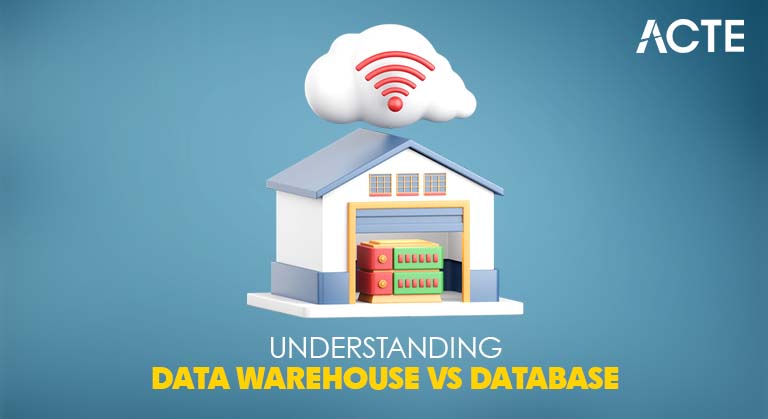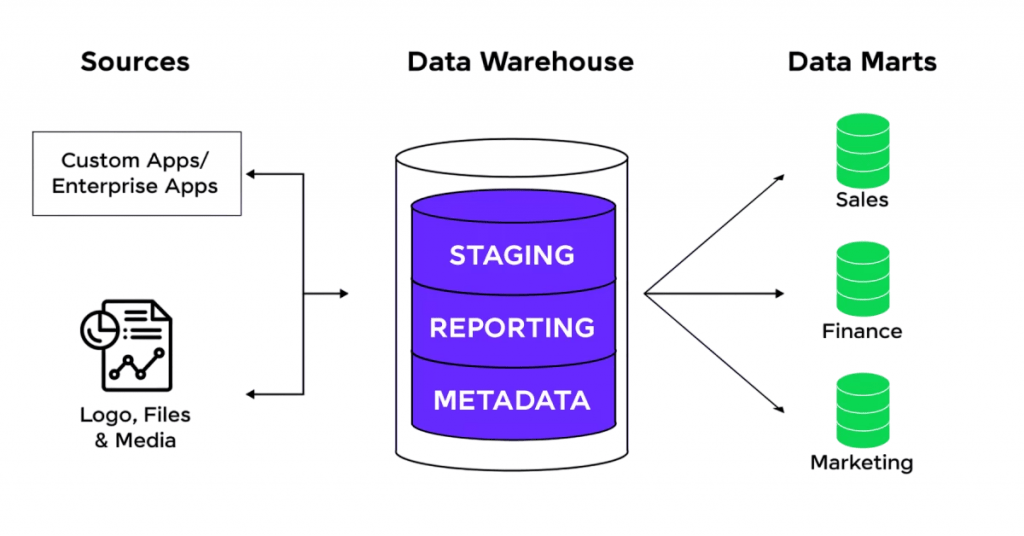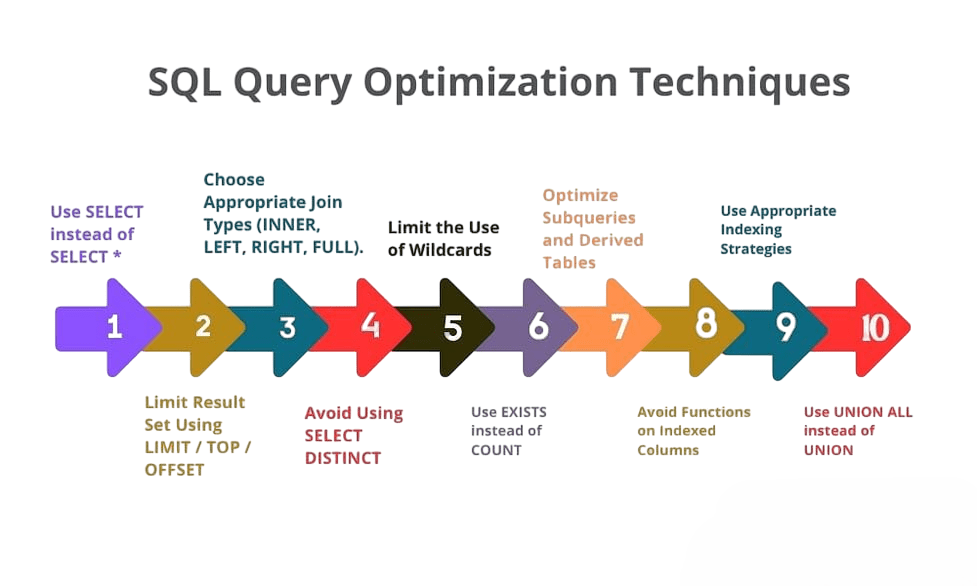
- Definition of Database
- What is a Data Warehouse?
- Use Cases Comparison
- Data Structure and Schema
- Query Performance
- Historical vs Real-Time Data
- Data Integration Support
- Scalability
- Maintenance and Cost
- Example Scenarios
- Summary
Definition of Database
A database is a structured collection of data stored electronically and managed by a database management system (DBMS). It allows users and applications to efficiently store, retrieve, manipulate, and manage data. Database Training covers key concepts like OLTP systems. Databases are designed to handle day-to-day transaction processing, often referred to as Online Transaction Processing (OLTP). They typically store current, operational data used to support the daily operations of an organization. Databases are highly normalized to minimize data redundancy and ensure data integrity. They organize data in tables with rows and columns, using primary and foreign keys to maintain relationships between tables. Common types include relational databases (e.g., MySQL, PostgreSQL, Oracle DB, SQL Server), NoSQL databases (e.g., MongoDB, Cassandra), and object-oriented databases. Key characteristics of databases include fast transaction processing, support for concurrent user access, data integrity, and real-time data updates. They are optimized for CRUD operations Create, Read, Update, and Delete which are essential for operational applications such as order processing, inventory management, customer relationship management, and banking systems.
Do You Want to Learn More About Database? Get Info From Our Database Online Training Today!
What is a Data Warehouse?
A data warehouse is a specialized type of database optimized for analytical processing and reporting, often called Online Analytical Processing (OLAP). It is designed to aggregate large volumes of historical data from multiple sources, transforming it into a format suitable for complex queries, trend analysis, and decision-making. Database Administration plays a key role in designing and maintaining data warehouses.

Data warehouses store data in a denormalized form, often using star or snowflake schemas, to improve query performance and simplify data analysis. They integrate data from various operational systems such as CRM, ERP, and marketing platforms, consolidating this data into a unified repository. Unlike traditional databases that focus on current operational data, data warehouses maintain historical snapshots over long periods, enabling trend analysis, forecasting, and strategic planning. They support large-scale batch processing, ETL (Extract, Transform, Load) workflows, and integration with Business Intelligence (BI) tools like Tableau, Power BI, and Looker. Modern data warehouses also increasingly reside in cloud environments (e.g., Snowflake, Amazon Redshift, Google BigQuery, Azure Synapse), offering scalable storage and computing resources tailored for big data analytics.
Use Cases Comparison
Databases serve the core operational needs of businesses:
- E-commerce platforms: Manage real-time inventory, customer orders, payments.
- Banking systems: Process transactions, account updates, fraud detection.
- CRM applications: Maintain customer profiles, interactions, and sales records.
- Healthcare systems: Store patient records and clinical data.
- ERP systems: Manage supply chain, HR, and financial data.
These applications require quick, reliable transaction processing, concurrency control, and data consistency.
Data warehouses serve analytical and strategic purposes:
- Business Intelligence: Enable reporting dashboards that analyze sales trends, customer behavior, and market performance.
- Financial forecasting: Historical data helps model cash flows, risks, and budgets.
- Marketing analytics: Analyze campaign effectiveness and customer segmentation.
- Supply chain optimization: Evaluate supplier performance and logistics efficiency.
- Regulatory compliance: Historical audit trails and reporting for compliance.
Data warehouses empower decision-makers to gain insights from historical and cross-functional data.
Would You Like to Know More About Database? Sign Up For Our Database Online Training Now!
Data Structure and Schema
Database Schema: Databases typically use highly normalized schemas to avoid data duplication. Normal forms (1NF to 3NF and beyond) ensure that each piece of data is stored once, promoting data integrity and efficient storage. Cassandra Keyspace defines the top-level namespace in Cassandra, shaping data organization and distribution. This structure is optimal for transactional systems but can complicate query performance due to complex joins. Example: A normalized database might have separate tables for Customers, Orders, and Products linked by keys. Data Warehouse Schema: Data warehouses use denormalized schemas such as star and snowflake schemas to reduce the complexity of queries. The star schema consists of a central fact table connected to multiple dimension tables that describe the facts (e.g., time, geography, product). Denormalization improves query performance by reducing the number of joins needed and enabling fast aggregation. Example: A sales data warehouse might have a fact table recording sales transactions, with dimension tables for customer demographics, product details, and time periods.
Query Performance
Databases are optimized for OLTP workloads, emphasizing quick inserts, updates, and deletes. Database Training introduces key performance optimization techniques. They use indexes, transaction logs, and concurrency controls to maintain fast, consistent performance. Data warehouses focus on read-heavy workloads that involve complex aggregations, joins, and trend analyses over large datasets. To achieve this, they employ.

- Columnstore indexes: Improve compression and query speed.
- Materialized views: Pre-aggregate data for faster query performance.
- Partitioning: Improve data management and query efficiency.
- Massive parallel processing (MPP): Architectures used in cloud warehouses for scaling analytics.
The difference in workload types means query optimization strategies differ significantly between databases and data warehouses.
To Earn Your Database Certification, Gain Insights From Leading Blockchain Experts And Advance Your Career With ACTE’s Database Online Training Today!
Historical vs Real-Time Data
- Databases generally contain real-time or near real-time data necessary for ongoing operations. For example, an e-commerce database updates inventory and order status as transactions occur.
- In contrast, data warehouses maintain large volumes of historical data collected over months or years. This historical perspective allows organizations to analyze trends and changes over time
- Modern data architectures may integrate both real-time operational data and historical data in hybrid approaches, such as data lakes or operational data stores, but fundamentally, the data warehouse is the repository for historical analytical data.
- Databases typically manage data from a single source or application. For example, a bank’s customer database primarily contains data generated by its own systems.
- Data warehouses must integrate data from multiple, diverse sources ERP, CRM, web analytics, social media, IoT devices, and more. Differences Between Couchbase and MongoDB become especially relevant in integration scenarios. This integration involves complex ETL processes to cleanse, transform, and consolidate data into a uniform format.
- ETL tools like Informatica, Talend, and cloud-native pipelines play a crucial role in feeding data warehouses. This ability to unify data from disparate systems is central to the value proposition of data warehousing.
- Databases scale vertically by adding more resources (CPU, memory, disk) to a single server, as they prioritize transactional consistency and latency.
- Data warehouses, especially cloud-based ones, scale horizontally by distributing data and processing across multiple nodes. Technologies like Amazon Redshift, Google BigQuery, and Snowflake offer near-linear scalability to accommodate growing volumes of data and user concurrency.
- Modern data warehouses can elastically scale compute and storage independently, allowing flexible management of cost and performance.
- Database: Manages daily transactions, customer orders, inventory levels across stores.
- Data Warehouse: Aggregates sales data from all stores for monthly reports, seasonal trend analysis, and inventory forecasting.
- Database: Stores patient visit records, medication prescriptions, lab results in real-time.
- Data Warehouse: Combines historical patient data across hospitals for population health studies, treatment efficacy analysis, and regulatory reporting.
- Database: Handles customer account updates, transactions, loan processing.
- Data Warehouse: Analyzes historical transaction patterns for fraud detection, risk management, and compliance auditing.
Data Integration Support
Preparing for a Database Job? Have a Look at Our Blog on Database Interview Questions and Answers To Ace Your Interview!
Scalability
Maintenance and Cost
Maintaining operational databases involves ensuring data integrity, performing backups, managing indexes, tuning queries, and monitoring concurrency. Cassandra Online Training provides key insights into distributed data systems. Data warehouses require maintenance of ETL pipelines, data quality checks, schema management, and optimization of analytical queries. The cost factors include storage for large historical data, compute resources for query processing, and licensing fees. Cloud data warehouses reduce upfront costs by offering pay-as-you-go pricing and minimizing infrastructure management but may incur higher ongoing operational expenses.
Example Scenarios
Scenario 1: Retail Chain
Scenario 2: Healthcare Provider
Scenario 3: Financial Institution
Summary
Databases and data warehouses serve distinct but complementary roles in modern data management: In the ever-changing world of data management, databases and data warehouses have different but related roles. Database Training emphasizes real-time transactional capabilities. Databases are specifically built for real-time transactions, focusing on data accuracy and allowing multiple users to access information at the same time. They support important daily business activities. On the other hand, data warehouses are made for analytical tasks. They bring together various data sources into one central location, which helps with complex queries and provides detailed historical insights. This focused method lets organizations meet their operational needs while also gaining valuable insights from their stored data. Choosing the right solution depends on the organization’s needs for operational efficiency versus strategic analytics. Increasingly, businesses adopt hybrid architectures, leveraging both databases for OLTP and data warehouses for OLAP to gain a competitive advantage through data-driven decision-making. Understanding their differences in structure, performance, and use cases enables architects and analysts to design robust, scalable data ecosystems that address both immediate operational demands and long-term analytical goals.


